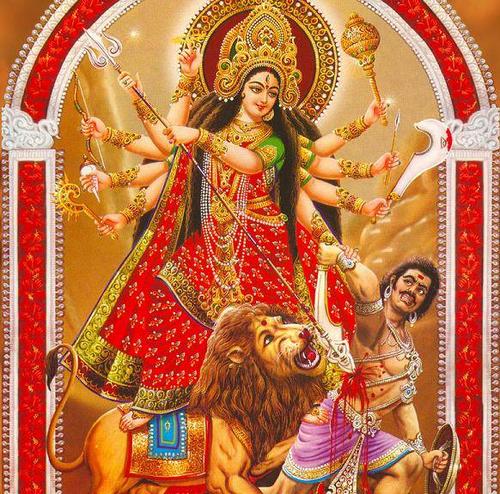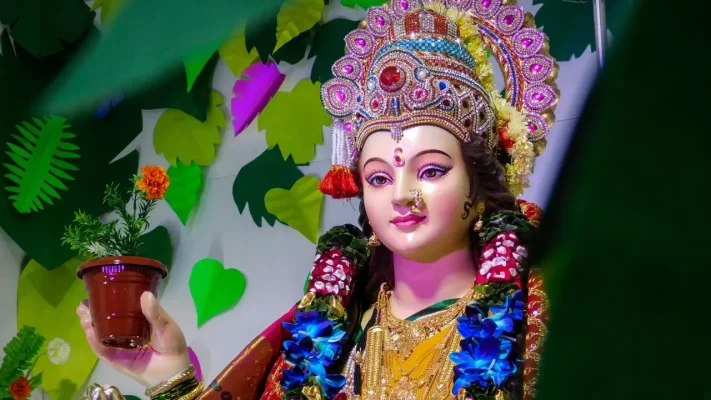Wavs
Maha Ashtami

Maha Ashtami, the eighth day of the Hindu festival of Durga Puja, holds profound significance across India, especially in states like West Bengal, Assam, and Bihar where the festival is celebrated with unparalleled fervor and grandeur. This thousand-word description delves into the rich traditions, rituals, symbolism, and festivities associated with Maha Ashtami, illuminating its spiritual and cultural importance in the hearts and lives of millions who partake in this auspicious occasion.
Introduction to Durga Puja and Maha Ashtami
Durga Puja, also known as Navaratri, is a nine-night festival dedicated to honoring Goddess Durga, the embodiment of divine feminine energy and strength. Each day of Navaratri celebrates a different form of the goddess, with Maha Ashtami marking the eighth day. It is believed that on this day, Goddess Durga engages in a fierce battle against the buffalo demon Mahishasura, ultimately triumphing over evil and restoring harmony in the universe.
Spiritual Significance and Mythological Background
Maha Ashtami holds significant mythological and spiritual importance rooted in Hindu scriptures and legends. According to Hindu mythology, Goddess Durga manifested from the combined energies of various gods to combat the formidable demon Mahishasura, who had unleashed terror upon the heavens and earth. Armed with divine weapons and riding a lion, Goddess Durga waged a relentless battle against Mahishasura for nine nights and days, culminating in his defeat on the tenth day, Vijaya Dashami.

Maha Ashtami, the eighth day of the Hindu festival of Durga Puja, holds profound significance across India, especially in states like West Bengal, Assam, and Bihar where the festival is celebrated with unparalleled fervor and grandeur. This thousand-word description delves into the rich traditions, rituals, symbolism, and festivities associated with Maha Ashtami, illuminating its spiritual and cultural importance in the hearts and lives of millions who partake in this auspicious occasion.
Durga Puja, also known as Navaratri, is a nine-night festival dedicated to honoring Goddess Durga, the embodiment of divine feminine energy and strength. Each day of Navaratri celebrates a different form of the goddess, with Maha Ashtami marking the eighth day. It is believed that on this day, Goddess Durga engages in a fierce battle against the buffalo demon Mahishasura, ultimately triumphing over evil and restoring harmony in the universe.
Spiritual Significance and Mythological Background
Maha Ashtami holds significant mythological and spiritual importance rooted in Hindu scriptures and legends. According to Hindu mythology, Goddess Durga manifested from the combined energies of various gods to combat the formidable demon Mahishasura, who had unleashed terror upon the heavens and earth. Armed with divine weapons and riding a lion, Goddess Durga waged a relentless battle against Mahishasura for nine nights and days, culminating in his defeat on the tenth day, Vijaya Dashami.

Cultural Celebrations and Festivities
Maha Ashtami is not only a religious occasion but also a time of joyous cultural celebrations and community gatherings. Cities and towns across India, especially in West Bengal, come alive with vibrant decorations, artistic pandals, and elaborate lighting arrangements that showcase creativity and craftsmanship. Artisans and craftsmen display their skills through intricate designs and thematic representations in pandals, often depicting mythological narratives or contemporary social issues.
Symbolism and Iconography
The iconography associated with Maha Ashtami revolves around the depiction of Goddess Durga in her fierce form, adorned with weapons in her multiple arms and seated atop a lion or tiger. The lion symbolizes courage and valor, while the goddess’s weapons represent her divine power to combat evil and protect her devotees from harm. The imagery embodies the triumph of righteousness and the victory of good over evil, inspiring devotees to emulate these virtues in their own lives.
Community Involvement and Charity
During Durga Puja, including Maha Ashtami, communities actively engage in charitable activities and social service initiatives. Many puja committees organize blood donation camps, health clinics, and distribution of food and clothing to the underprivileged. These initiatives reflect the spirit of compassion, solidarity, and social responsibility ingrained in the festival’s ethos.


